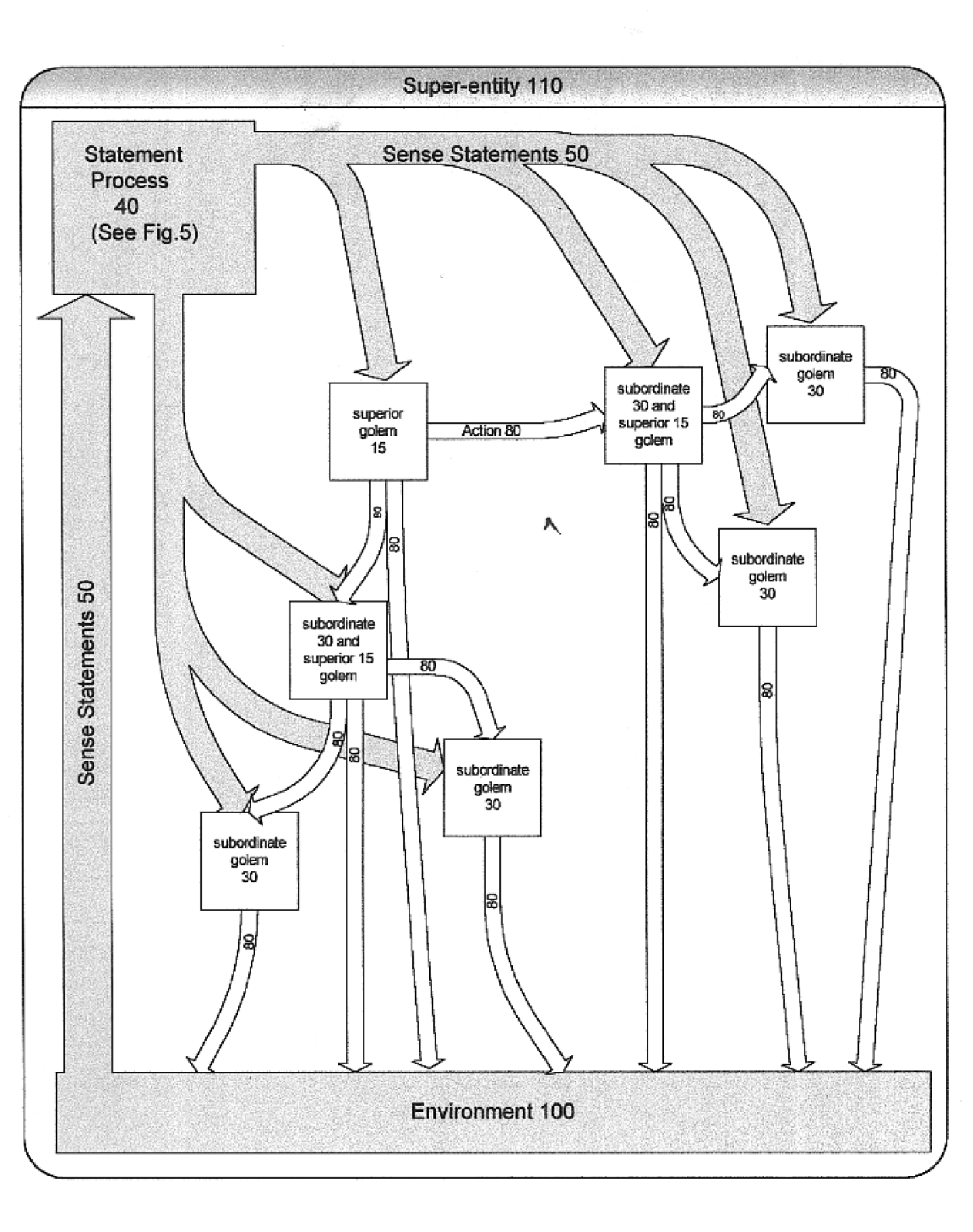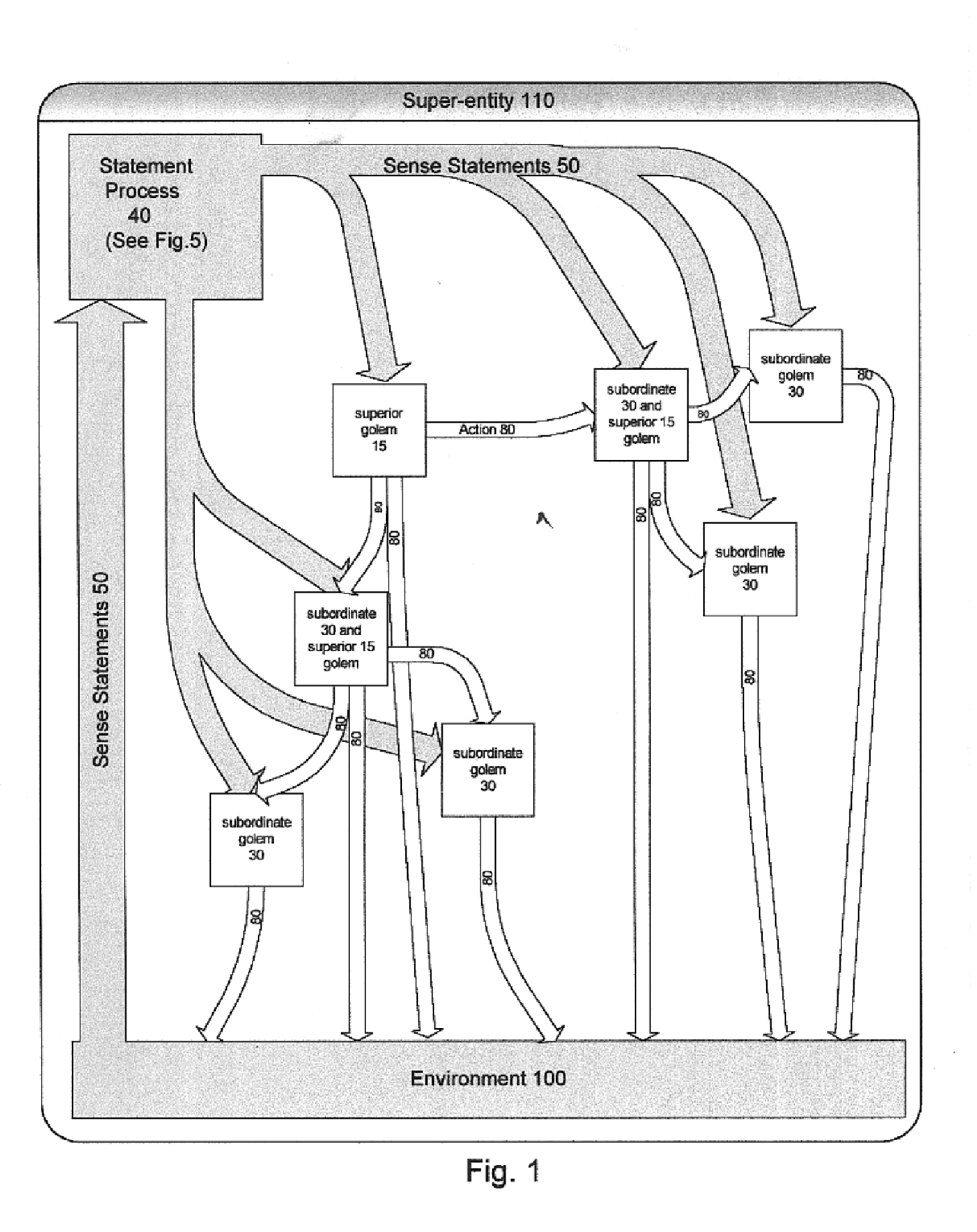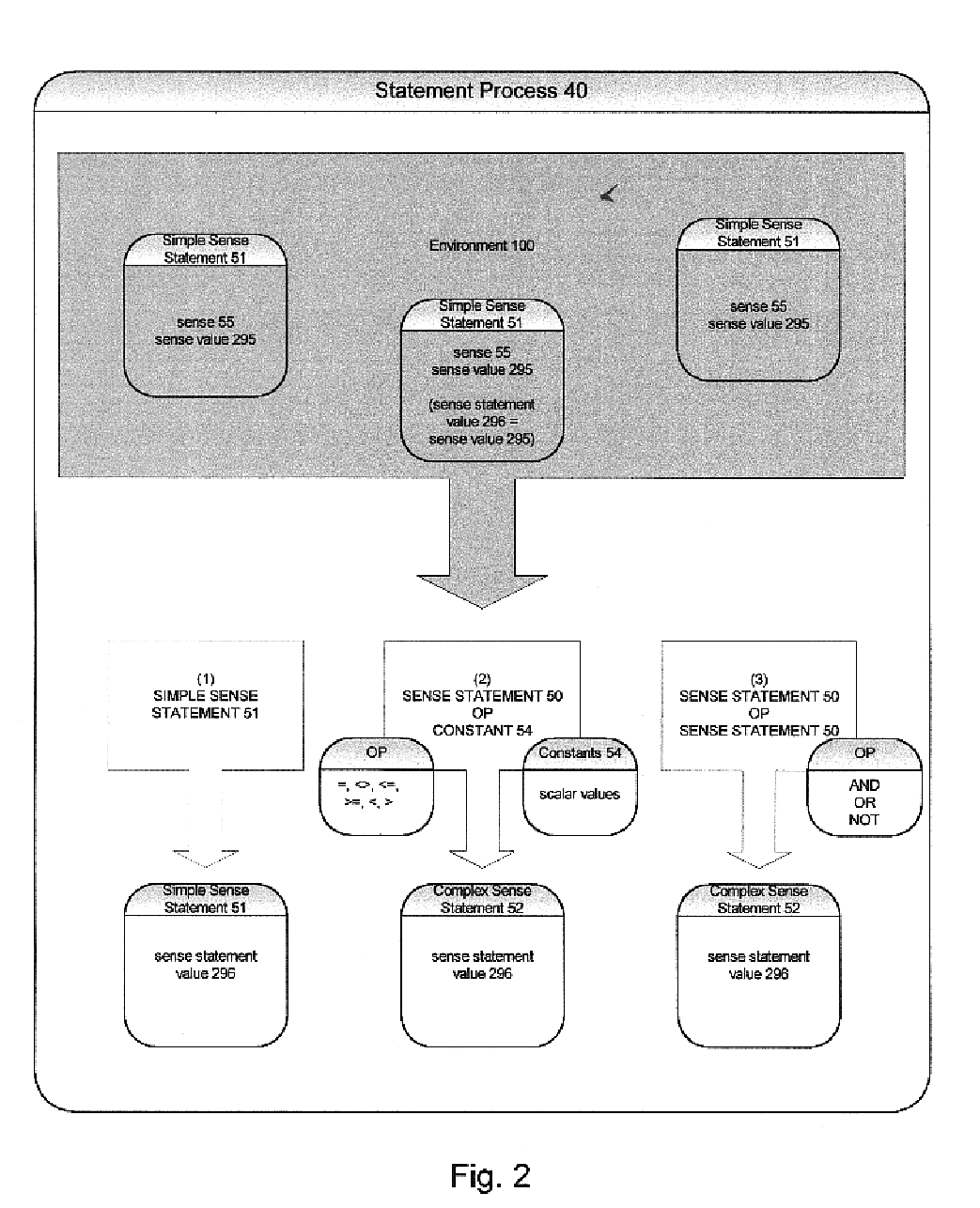Modular, hierarchically organized artificial intelligence entity
a learning entity and hierarchical structure technology, applied in the field of artificial intelligence systems, can solve the problems of inability to independently and uncorrelated inputs, complex behavior of ai devices with these two properties, and inability to learn in a single way, and achieve the effect of multiplication the learning capability of simple ai entities and significant potential for use as modeling tools
- Summary
- Abstract
- Description
- Claims
- Application Information
AI Technical Summary
Benefits of technology
Problems solved by technology
Method used
Image
Examples
Embodiment Construction
FIGS. 1-3, 4(A--C), 5(A-B), and 6--Structure of the Preferred Embodiment
FIG. 1: Super-entity of hierarchically organized learning golems
FIG. 1 is a block diagram showing the structure of a super-entity 110, a collection of entities linked by superior-subordinate relationships. Entities in the diagram include a plurality of superior golems 15 and subordinate golems 30, as well as a plurality of entities labeled both subordinate golem 30 and superior golem 15. Each of these entities is also, more generally, a golem (20, in FIG. 3). Golem 20 is an AI structure which is the subject of this invention, and superior golem 15 is golem 20 which sets policy for some other golem 20. Likewise, golem 20 for which some other golem 20 sets policy is subordinate golem 30.
It is important to note that an entity, whether or not it enjoys a superior or subordinate relationship with another entity, need not be golem 20. In fact, superior golem 30 may set policy for a subordinate entity which is not gole...
PUM
 Login to View More
Login to View More Abstract
Description
Claims
Application Information
 Login to View More
Login to View More - R&D
- Intellectual Property
- Life Sciences
- Materials
- Tech Scout
- Unparalleled Data Quality
- Higher Quality Content
- 60% Fewer Hallucinations
Browse by: Latest US Patents, China's latest patents, Technical Efficacy Thesaurus, Application Domain, Technology Topic, Popular Technical Reports.
© 2025 PatSnap. All rights reserved.Legal|Privacy policy|Modern Slavery Act Transparency Statement|Sitemap|About US| Contact US: help@patsnap.com



